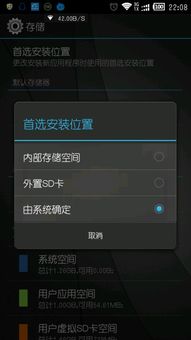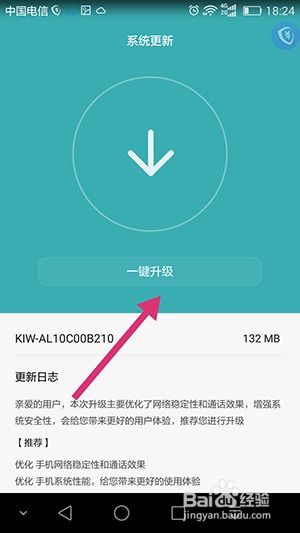
Linux线程同步方法:三种实现技巧
时间:2023-05-08 来源:网络 人气:
线程同步是指多个线程按照一定的顺序执行,保证数据的正确性和程序的稳定性。在多线程编程中,线程同步是一个重要的问题,它涉及到锁、信号量、条件变量等多种技术。本文将介绍Linux下实现线程同步的三种方法。
一、互斥锁
互斥锁是最常用的线程同步方法之一。它通过对共享资源进行加锁和解锁来保证多个线程对共享资源的访问顺序。在Linux下使用互斥锁需要用到pthread_mutex_t结构体和相关函数。
在程序中使用互斥锁需要注意以下几点:
1.加锁和解锁必须成对出现线程同步的方法有哪些?Linux下实现线程同步的三[荐],否则会导致死锁;
线程同步的方法有哪些?Linux下实现线程同步的三[荐]_使用线程实现串口通信_数字通信系统同步有那些方法
2.加锁操作应该尽量少地占用CPU时间,以免影响程序效率;
3.互斥锁不能跨进程使用。
下面是一个使用互斥锁实现线程同步的例子:
c
#include
#include
#include
pthread_mutex_tmutex;
void*thread_func(void*arg){
pthread_mutex_lock(&mutex);//加锁
printf("Thread%disrunning\n",*(int*)arg);
pthread_mutex_unlock(&mutex);//解锁
returnNULL;
}
intmain(){
pthread_tthread[5];
inti,ret;
pthread_mutex_init(&mutex,NULL);//初始化互斥锁
for(i=0;i<5;i++){
ret=pthread_create(&thread[i],NULL,thread_func,&i);
if(ret!=0){
printf("Createthread%dfailed\n",i);
}
}
for(i=0;i<5;i++){
pthread_join(thread[i],NULL);//等待线程结束
}
pthread_mutex_destroy(&mutex);//销毁互斥锁
return0;
}
线程同步的方法有哪些?Linux下实现线程同步的三[荐]_使用线程实现串口通信_数字通信系统同步有那些方法
二、条件变量
条件变量是一种线程同步机制线程同步的方法有哪些?Linux下实现线程同步的三[荐],它允许线程在满足特定条件时才进行操作。在Linux下使用条件变量需要用到pthread_cond_t结构体和相关函数。
在程序中使用条件变量需要注意以下几点:
1.条件变量必须与互斥锁一起使用,以避免竞态条件;
线程同步的方法有哪些?Linux下实现线程同步的三[荐]_数字通信系统同步有那些方法_使用线程实现串口通信
2.线程在等待条件变量时会释放互斥锁,当条件满足时再重新获取互斥锁;
3.条件变量的信号可能会被意外地发送给错误的线程。
下面是一个使用条件变量实现线程同步的例子:
c
#include
#include
#include
pthread_mutex_tmutex;
pthread_cond_tcond;
void*thread_func1(void*arg){
pthread_mutex_lock(&mutex);//加锁
printf("Thread1iswaiting\n");
pthread_cond_wait(&cond,&mutex);//等待条件变量
printf("Thread1isrunning\n");
pthread_mutex_unlock(&mutex);//解锁
returnNULL;
}
void*thread_func2(void*arg){
pthread_mutex_lock(&mutex);//加锁
printf("Thread2isrunning\n");
pthread_cond_signal(&cond);//发送信号
pthread_mutex_unlock(&mutex);//解锁
returnNULL;
}
intmain(){
pthread_tthread1,thread2;
intret;
pthread_mutex_init(&mutex,NULL);
pthread_cond_init(&cond,NULL);//初始化条件变量
ret=pthread_create(&thread1,NULL,thread_func1,NULL);
if(ret!=0){
printf("Createthread1failed\n");
exit(1);
}
ret=pthread_create(&thread2,NULL,thread_func2,NULL);
if(ret!=0){
printf("Createthread2failed\n");
exit(1);
}
pthread_join(thread1,NULL);
pthread_join(thread2,NULL);
pthread_mutex_destroy(&mutex);
pthread_cond_destroy(&cond);//销毁条件变量
}
数字通信系统同步有那些方法_使用线程实现串口通信_线程同步的方法有哪些?Linux下实现线程同步的三[荐]
三、信号量
信号量是一种线程同步机制,它可以控制多个线程对共享资源的访问顺序。在Linux下使用信号量需要用到sem_t结构体和相关函数。
在程序中使用信号量需要注意以下几点:
1.信号量必须初始化为一个非负整数;
数字通信系统同步有那些方法_使用线程实现串口通信_线程同步的方法有哪些?Linux下实现线程同步的三[荐]
2.等待操作和释放操作必须成对出现,否则会导致死锁;
3.信号量的值应该尽量少地被修改,以避免竞态条件。
下面是一个使用信号量实现线程同步的例子:
c
#include
#include
#include
#include
sem_tsem;
void*thread_func1(void*arg){
sem_wait(&sem);//等待信号量
printf("Thread1isrunning\n");
sem_post(&sem);//释放信号量
returnNULL;
}
void*thread_func2(void*arg){
sem_wait(&sem);
printf("Thread2isrunning\n");
sem_post(&sem);
returnNULL;
}
intmain(){
pthread_tthread1,thread2;
intret;
sem_init(&sem,0,1);//初始化信号量
ret=pthread_create(&thread1,NULL,thread_func1,NULL);
if(ret!=0){
printf("Createthread1failed\n");
exit(1);
}
ret=pthread_create(&thread2,NULL,thread_func2,NULL);
if(ret!=0){
printf("Createthread2failed\n");
exit(1);
}
pthread_join(thread1,NULL);
pthread_join(thread2,NULL);
sem_destroy(&sem);//销毁信号量
}
本文介绍了Linux下实现线程同步的三种方法,分别是互斥锁、条件变量和信号量。这些方法都有各自的优点和缺点,需要根据具体情况选择适合的方法。希望本文对读者在多线程编程中掌握线程同步技术有所帮助。

相关推荐
教程资讯
教程资讯排行

系统教程
-
标签arclist报错:指定属性 typeid 的栏目ID不存在。












